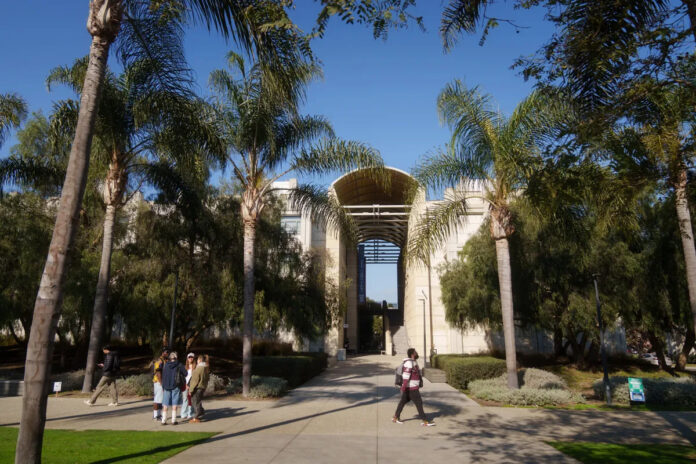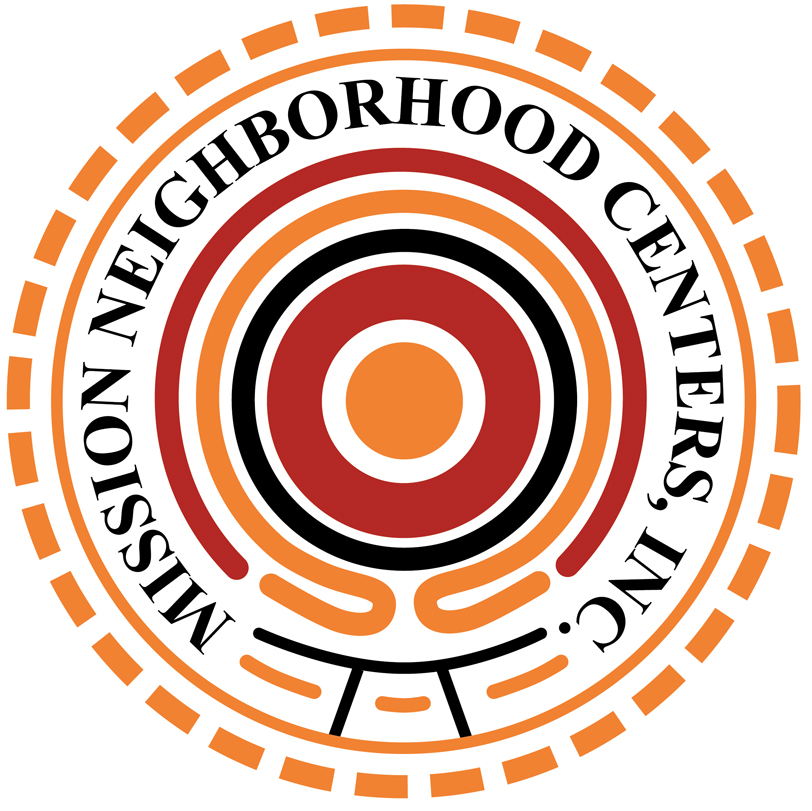Some students work multiple jobs and give up extracurricular activities to supplement their financial aid. Many say it’s worth it
by Katelyn Do, Emewodesh Eshete and Mikhail Zinshteyn
CalMatters
Smaller class sizes, grassy knolls, campus idyll — for low-income college students chasing that storied experience at California’s private nonprofit colleges, the expense is high: sometimes $30,000 or more in the first year alone after all grants and scholarships are considered.
While most California college students attend a public college or university, roughly 160,000 undergraduates pursue degrees at private nonprofit universities such as Chapman University, Loyola Marymount University, Stanford and the University of Southern California.
And low-income freshmen on average paid around $21,000 to attend private campuses for just one year in 2021-22, according to a CalMatters analysis of federal college costs data using the most recent year of information available. It used to be even higher, adjusted for inflation in 2023-24 dollars: The price students pay has declined by a few thousand dollars since data-keeping began in 2008-09, the CalMatters analysis shows. For its analysis, CalMatters defined low-income as a household income below $48,000.
There are exceptions: Stanford, for example, ends up being virtually free for low-income freshmen — those with family incomes below $100,000. University of Southern California is also relatively affordable, requiring low-income students to pay an average of about $15,000 after all financial aid is factored in.
But other campuses post much steeper net prices, a term that refers to the total cost of attendance — such as tuition, housing, transportation and food — minus all the state, federal, institutional and outside grants and scholarships students receive. For example, Pepperdine University’s net price for low-income students was more than $36,000 for the 2022-23 school year.
“Every year, we speak with students and families who truly desire to choose Pepperdine, but find that it isn’t financially feasible for their family,” wrote Kristin Paredes Collins, who leads enrollment and financial aid at Pepperdine. ”Although we truly believe that Pepperdine is a worthy investment, we acknowledge that it might not be financially feasible for every admitted student.”
She added: “We remind them that they will likely be successful at whatever school they choose.” Pepperdine spent $106 million on financial aid in 2023-24.
Net price calculators that colleges host on their websites can offer more fine-tuned estimates of what students will pay that may show lower costs, including extra school aid for high test scores and high school grades, but the prices still remain relatively high.
CalMatters reporters interviewed 16 students with Pell grants, the federal financial aid grant for low- and middle-income students, across eight California private nonprofit colleges to learn their struggles and reasons for attending these more expensive institutions.
These students worked 15 to 20 hours a week or more, missed out on campus cultural events and regularly sought additional financial aid by petitioning their colleges and applying for outside support. For most students interviewed, the effort was worth it. The students were motivated by the prestige of their institutions, smaller class sizes and the specific academic programming that other colleges don’t offer. Most students CalMatters spoke with avoided taking out any loans. And quite a few lived at home to avoid costly room and board fees.
Low-income students seem to know what’s more affordable, judging by where they enroll. Only about 27 percent of the state’s private nonprofit college students received the federal Pell grant in 2022-23, CalMatters calculations of federal data show. At the University of California, a third received the grant that year; nearly half got it at California State University. Both public systems, on average, cost less.
Net price for low-income students at Cal State was around $6,000 a year and under $10,000 at the UC, on average, according to a CalMatters analysis of 2021-22 academic year data. One reason they stay more affordable than private colleges is because they receive about $10 billion annually in state taxpayer support to fund their education missions. Private colleges, beyond state financial aid for their students, don’t receive such state subsidies.
“I can’t imagine how a lower-income family can fork up over $80,000 for one student to earn a bachelor’s degree” at a private nonprofit college, said Michael Itzkowitz, a researcher on the value of college. Those private colleges, he added, “continue to be much less affordable for all students in comparison to many of the public institutions located within the state.”
The federal data has limitations: It only has estimates for full-time freshmen who took out federal loans or received federal grants. That excludes many well-off families. The federal government publishes 2022-23 net price data for individual schools, but its data for all campuses for now stops at 2021-22; CalMatters’ school-wide analysis relied on the 2021-22 data.
Why students choose private colleges
Sophomore Monserrat Herrera pays $2,000 a semester to attend Dominican University in the Bay Area — a fraction of what she’d owe had she lived on campus. Instead, she commutes about 11 miles to campus from home in Novato. Though she got into several UCs and Cal States, Dominican is closest and offers a bachelor’s nursing program that admits freshmen immediately; other schools require students to apply for the nursing program only after their sophomore year.
“I do really like how it’s a direct entry program, so I don’t have to go through applying to nursing school again,” she said.
But not all students have found the effort to afford their education as manageable. Erykah Glass worked a midnight to 6 a.m. graveyard shift to afford her on-campus housing costs during her sophomore year at the University of San Francisco. “It affected my mental health which then affected my school work,” she said.
Her top cost, tuition, was covered through the school’s Black Scholars program. Still, now in her junior year, she’ll pay around $7,000 per semester for housing, she said.
Glass has found time between work and school to join the campus’ women’s club soccer team, though the demands of her schedule means she’s only able to make practice on Mondays. She hasn’t been available to play during games.
“I went head on into this semester knowing I wouldn’t have any breaks,” Glass said.
Living at home is a cost-saver
After tuition, on-campus housing is typically the top expense for students attending private colleges. In California, the average cost of room and board at a private college over four years is $66,000 according to the federal National Center on Educational Statistics.
Still, the federal data on the net price of attending college strips a lot of nuance from what students are expected to pay. At the University of La Verne, 57 percent of full-time freshmen attending the school lived at home in 2021-22, said Laura Evans, director of financial aid at the school. Among the low-income students who receive Pell grants, 59 percent lived at home.
That probably means those students aren’t paying rent, but the federal government’s cost calculations still assume the student has a housing expense. For that reason, Evans likes to draw a distinction between realized costs and paper costs that don’t actually materialize for students.
For the students living at home, their realized costs are chiefly tuition and fees, which are about $48,000 a year at La Verne.
For the commuter students who are low-income, the financial aid they received overall in 2021-22 covered much of their actual costs — all but $9,780. That’s a relatively manageable net price for freshmen.
Evans said that to cover that lower net price, about $5,500 can come from federal student loans, leaving about $4,200 in remaining net costs. Money from part-time work could clear the difference. With minimum wage at $16.50 an hour, a student would need to work about 5 hours a week for the whole year to cover that remaining bill.
That’s all lower than the official net price for the school that the federal government publishes: Around $26,000 in 2021-22.
“That’s one of the reasons why they choose La Verne. It’s because they can afford to be commuters,” said Evans, who added that unlike many other colleges, La Verne does not require its freshmen to live on campus. In 2023, the school of 5,600 students spent about $62 million on student financial aid — more than a third of its total revenue from tuition and fees. Portions of the school’s investment returns from its endowment also help fund student scholarships.
Living at home — it’s often the secret sauce to make a private college education pencil out for low-income students. It’s what made the difference for second-year student Leandra Cardenas to afford attending Loyola Marymount University in Los Angeles. By residing with her dad, she attends the university practically for free because state, federal and campus grants cover tuition. Cardenas wakes up early to spend up to two hours on the bus commuting to her 8 a.m. class from Hollywood. She drives some days, sharing a car with her father, but says the cost of gas is expensive. Living on-campus in a double at Loyola Marymount costs around $14,000 per year, the school’s website shows. “I wasn’t gonna put that financial burden” on her parents, she said.
Working makes a difference, too
It’s not just long commutes; low-income students must also work, pouring more hours of the day into jobs rather than soaking in the benefits of campus life. In her first year at USC, senior Mika Panahon only spent two days on campus so that she could work at grocery stores and fast-food restaurants. She needed to cover the cost of food and transportation even though she had almost all of her tuition covered through financial aid. “I packed my whole schedule into a 10-hour day here so that I can have more time to be at my job,” said Panahon.
Her total cost of attendance the last two academic years was $87,000 in fall 2023 and $95,000 this year. Between aid from the university, the state and federal government, the cost she was responsible for was about $15,500 each year, according to financial aid statements from USC she shared with CalMatters. The school expected her to take out loans and work part time through the federal work-study program, leaving her on the hook for $4,000 each year. To make up the difference, she had to work.
The effort is worth it
Are the long commutes, demanding work schedules and extra time in the financial aid office worth the price of a private college education? A majority of the students CalMatters spoke to said yes.
Students said that the smaller class sizes that private schools offer compared to public schools have allowed them to foster better relationships with their professors. Cardenas says Loyola Marymount gave her access to making “more personalized and individual” connections through its smaller class sizes, which originally drew her to the school.
For recent USC graduate Kelvin Nguyen, coming from a low-income household led by parents who were refugees from Vietnam, attending USC was an obvious choice. “You apply to the schools that you think would make them proud,” Nguyen said. USC gave him the “blueprint” to navigate the top-tier professional and consulting worlds of business that he wants to break into.
Even with the hardship of working three jobs simultaneously and taking out $15,000 in loans to afford to live on and near campus, Nguyen believes USC put him in the position for his success today. He’s now earning a master’s in public health at UCLA. Knowing that he was the first in his family to attend a prestigious private university, Nguyen said he “put in whatever financial or physical or mental resources to make it.”
– Data reporter Erica Yee contributed to this reporting.



